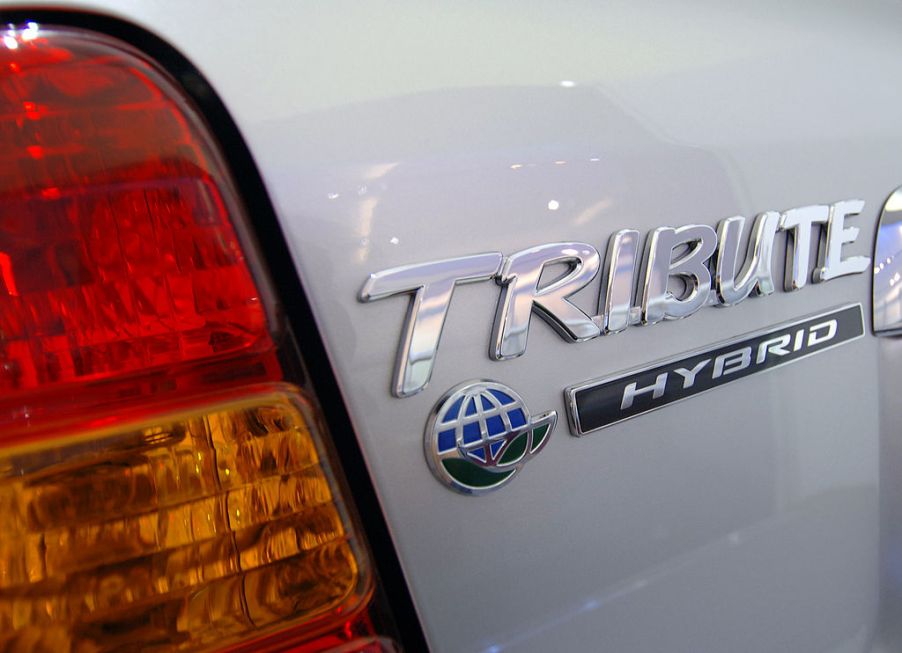
Why Did Mazda Kill the Tribute SUV?
The Japanese automaker Mazda’s lineup mostly consists of SUVs, all of which are considered to be very dependable. One of its small SUVs, the CX-30, was recently awarded a Top Safety Pick designation from the IIHS. Consumer Reports also acknowledged the company as the most reliable car brand of 2020.
However, not all of Mazda’s vehicles have received such high praise. While the CX-5 has become a popular pick for crossover SUV shoppers, many don’t know its origins. The CX-5 was actually inspired by the now discontinued Mazda Tribute. Why did the company decide to stop producing this SUV?
About the Mazda Tribute
In the beginning, the Mazda Tribute’s future looked promising. The compact crossover SUV went on sale in 2001 after its reveal at the Los Angeles Auto Show in 2000. It was a collaborative effort between Ford and Mazda, designed after the first-generation Ford Escape. Mazda marketed it as the “Miata of SUVs.”
The first Tribute was powered by a meager 2.0-liter inline-four engine that made 130 hp. It was paired with either a five-speed manual or a four-speed automatic transmission. A 3.0-liter V6 capable of 203 hp was optional. Despite its higher fuel consumption than the base engine, critics recommend this motor for the sportiest driving experience.
In 2005, the Tribute got an exterior refresh – a more powerful base engine and an upgraded suspension. However, its interior was still not as comfortable as its rivals. It would later be upgraded in the second-generation Tribute, released in 2008.
For the remodeled year, the Tribute’s trim levels were scaled back to just three for both “i” and “s” models. The former offered a standard four-cylinder engine while the latter had a six-cylinder. As always, you could still purchase the V6 option, now with a 30-hp power increase.
Each Tribute could also have all-wheel drive and a six-speed automatic transmission. Critics reported that the Tribute had smooth handling, being able to tackle tight corners while still feeling planted to the road. A hybrid variant, dubbed the Tribute HEV, was also made available. It had the most impressive fuel economy of any Tribute with a combined score of 32 mpg.
Why did Mazda kill this car?
While the Tribute was fun to drive, it was lagging far behind the competition. Its second-gen interior was only sparsely upgraded, still full of many cheap plastic elements. Other rivals also had better driving dynamics. Due to declining sales figures, Mazda and Ford went their separate ways. Mazda’s first SUV independent of Ford, the CX-5, was released a year after the death of the Tribute.
The improved Mazda CX-5
The CX-5 has been around for seven years and is still going strong. Its base engine is a 2.5-liter four-cylinder capable of 187 hp. Higher trims sport either a turbocharged version of the standard motor or a turbocharged 2.2-liter diesel engine. The turbo 2.5-liter engine is the most powerful, producing up to 250 hp if it’s running on premium fuel.
Unlike the Tribute, the CX-5 has refined steering and acceleration. Its handling is also slightly improved and many critics describe it as a dream to drive. Even the base engine is adequately powerful for passing, especially when Sport driving mode is engaged. The base 2.5-liter engine also gets the best gas mileage – 25 mpg in stop-and-go traffic and 31 mpg for highway driving.
The CX-5’s interior is miles ahead of the Tribute’s. It’s stylish and built with premium materials plus comfortable seats. There’s plenty of standard technology and advanced safety features, and higher trims have smartphone integration. While the Mazda Tribute is still a decent car, it can’t beat the CX-5 in terms of overall quality.



